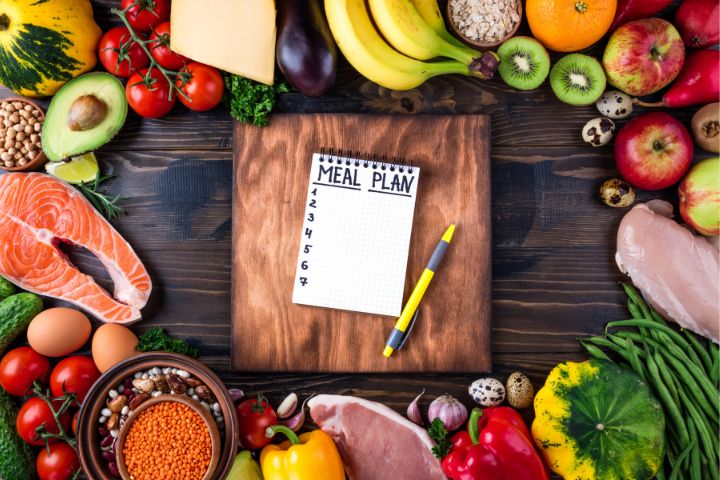

How to create a weekly meal plan to match your budget
At Safe Financial, we understand that creating and maintaining a budget is vital for the financial stability of your household. However, the real challenge comes when it's time to stick to that budget to meet your family's needs. With the skyrocketing cost of living, getting creative is essential to make ends meet.
Given that feeding your family usually takes a significant portion of your budget, here are some tips to help you create a weekly meal plan that meets your family's nutritional needs and aligns with your budgetary limitations.
Assess and prioritise
To plan meals that meet your family's needs and tastes, clearly define your weekly food budget. Then, consider their nutritional needs and preferences. This could include considering dietary restrictions, specific health goals, or personal food likes or dislikes.
Take stock of what you already have
Taking inventory of what you already have in your pantry, fridge, and freezer is a good idea. By making a list of these items, you can avoid buying things you don't need, and it will remind you of items that have been sitting in the back of the cupboard for too long and need to be used up.
Plan your meals
If you are spontaneous and don't usually plan your meals, starting a plan might be challenging. However, as the famous saying goes, "If you fail to plan, you plan to fail". To begin, look at the list of food items you already have and identify recipes you could prepare using those ingredients. The internet can be a valuable resource to help you find exciting and affordable ideas to make the most of what you have at home. By doing this, you could significantly cut down your food expenses in the first week.
Next, create a list of simple, budget-friendly recipes that your family enjoys. Choose dishes that use ingredients that are easily accessible and can be prepared in large quantities. If you plan your meals based on the items on sale or in season, you'll save even more money at the checkout.
There's a lot to like about leftovers
It's also a good idea to plan meals that can be used for the next day. You can repurpose them as lunches or tomorrow's dinner or freeze them for later use. This way, you'll always have something ready to go if you don't feel like cooking, and you'll be less likely to order takeout.
Always shop with a list
Creating a detailed list of the ingredients you need for your meal plan is essential. Stick to this list when you're at the supermarket to ensure that you don't forget anything. However, it's also necessary to remain open to adjusting your meal plan if there are any unexpected specials or changes in your schedule.
Stash your staples
Keeping a stash of food staples can help you avoid blowing your budget when you don't know what to cook. Eggs are versatile and can be used in many ways, from a hard-boiled egg for lunchboxes to a veggie-packed omelette for dinner. A can of tuna is also an excellent option for wraps or tuna melts and can be mixed with rice, vegetables, and dressing to create a healthy dinner.
Embrace simple ingredients
If you opt for simple, versatile ingredients that can be used in multiple recipes, you can take advantage of buying in bulk and minimise waste. Try to rely on natural food as much as possible while limiting processed and convenience foods, as they are more costly and often lack nutritional value. Additionally, you could explore plant-based protein sources to reduce expenses without sacrificing nutrition.
We all need a treat from time to time
Including the occasional indulgence in your weekly planning is essential so you don't blow the budget with impulse purchases. Check what's on special, and grab a few tempting treats to enjoy on family movie night.
Have some fun with theme nights
Just because you're developing a meal plan to fit your budget doesn't mean it needs to be boring. You can create weekly meals based on themes like Mexican Monday, Thai Tuesday, Fish Finger Friday and Stir-fry Sunday. If your theme nights incorporate plenty of pantry staples like rice and pasta, you can make your meals more filling without spending much money.
Plan for success
If you find planning, preparing and serving your meals challenging, then you might need some help to get started. If you want to embrace meal planning but need new kitchen appliances to make things easier, we've got you covered. Check out our cash loans of up to $5,000 to find out how quick and easy it is to get the extra funds you need. Once your loan is approved, the cash is usually in your bank account within a few hours - so you can start planning and saving right away!